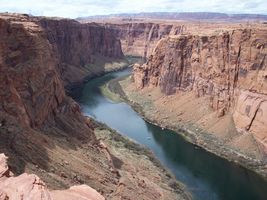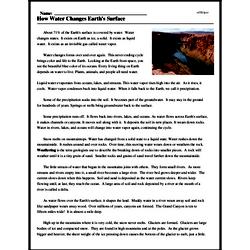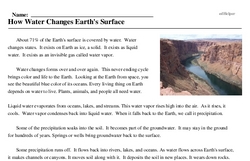How Water Changes Earth's Surface
About 71% of the Earth's surface is covered by water. Water changes states. It exists on Earth as ice, a solid. It exists as liquid water. It exists as an invisible gas called water vapor.
Water changes forms over and over again. This never ending cycle brings color and life to the Earth. Looking at the Earth from space, you see the beautiful blue color of its oceans. Every living thing on Earth depends on water to live. Plants, animals, and people all need water.
Liquid water evaporates from oceans, lakes, and streams. This water vapor rises high into the air. As it rises, it cools. Water vapor condenses back into liquid water. When it falls back to the Earth, we call it precipitation.
Some of the precipitation soaks into the soil. It becomes part of the groundwater. It may stay in the ground for hundreds of years. Springs or wells bring groundwater back to the surface.
Some precipitation runs off. It flows back into rivers, lakes, and oceans. As water flows across Earth's surface, it makes channels or canyons. It moves soil along with it. It deposits the soil in new places. It wears down rocks. Water in rivers, lakes, and oceans will change into water vapor again, continuing the cycle.




